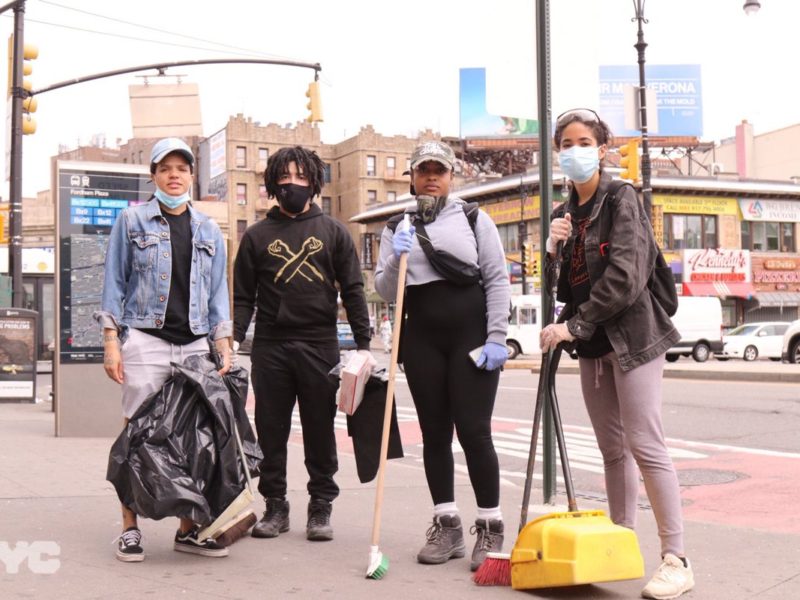Bronx redistricting raises climate change questions for City Island residents
Fishermen in vests sporting tackle boxes sit next to mainland-bound residents, some of whom move briefcases to their laps and adjust their lapels as the fishing rods jostle by. The lone bus that runs the length of City island stops infrequently to pick up a varied assortment of people. After years of trying, John Doyle, City Island Rising president and a Bronx District Leader, explains that City Island will finally get 24-hour bus service this June.
Poor irrigation, sewer systems and flooded streets are all problems one local organization aims to solve. City Island Rising, a local community based nonprofit, works to combat the climate crisis’ effects on the community, along with other projects. David Diaz, who serves as a board member, and Doyle orchestrated a walking tour with the Mayor’s Office last year to show the issues on the island. Over the past two years, City Island Rising has compiled over 1,000 flooding photos for New York Sea Grant to prove, through citizen science, the continued flooding and environmental problems.
In the proposed redistricting of New York, City Island would leave majority Democrat NY-14 to join 03, a majority Republican district mostly in Long Island.
Democratic gerrymandering was slated to give advantages to almost all of New York’s congressional districts, according to the NY Times. However, last Thursday, a New York Appeals court ruled that new congressional districts drawn by Democrats violated the state’s ban on partisan gerrymandering, possibly blocking the state from using the lines for this year’s midterm election.
The potential change is upsetting many on the island, and calling into question whether decades of efforts in regards to climate change policy and general infrastructure improvements will continue to go unresolved.
“There’s only one way on, one way off this island,” says David Diaz, and it’s a road that floods frequently. City Island Avenue, which runs the length of the 1.5 mile long island and connects the island to the northern tip of the Bronx, is the only road leading to the mainland. Local residents have been fighting for years to change this, calling for improved infrastructure and a ferry, because the state government designates the island as a Zone 1 evacuation area, making access to the mainland critical.
“What we are doing basically is shining a light on these things and trying to get government funding… because if these conditions existed in Central Park or lower Manhattan, it just wouldn’t be tolerated,” says Doyle. “When we are on the outskirts of the city in a remote neighborhood like this… and not of political consequence to people, it’s easy to ignore.”
Citizen advocacy is one of the foremost focuses of City Island Rising. But, Doyle and Diaz see real change only occurring as a result of a holistic appraisal of the island and subsequent policy and planning. Through increasing documentation, says Doyle that officials will be held more accountable.
In 2009, budget cuts led to a proposal where the fire department would only be operational nine hours a day, according to the NY Times. In part, this was because so few runs were conducted on the island. However, that was because the fire trucks were not allowed to leave the island – then it would be left too vulnerable.
The island, population: 4,500, is just past Pelham Bay Park, nestled in between a New York Police shooting range and some of the most polluted waters in the region. Sewage has long polluted the water of the Hutchinson River, which runs into Eastchester Bay, west of City Island. Unsurprisingly, it received an “F” grade from Save the Sound, an organization focused on improving the water quality of the Long island Sound. On the island itself, the symphony of morning bird songs are often stifled by gun shots from Rodman’s Neck, and noise pollution remains a divisive topic in the area, with Doyle saying some residents said “it sounds like freedom!”
For decades, agreements have been made promising “soundproofing” of Rodman’s Neck and funding, but the pandemic as well as the cycle of government turnover has significantly slowed down any progress.
According to Doyle, empty promises and government agencies dragging their feet seems to explain many of City Island’s continued issues. “You have to almost have sympathy for the new people coming in,” says Doyle, “they’re inheriting failed promises.”
But, Senator Biaggi and Alexandria Ocasio-Cortez apparently have succeeded in breaking the political stagnancy City Island was stuck in for decades. “AOC and Biaggi came out of nowhere and smashed the establishment, knocked off two titans, and set off a political earthquake, and our group started the year after. If these young women could make all this happen maybe we could too,” says Doyle.
If the redistricting occurs as proposed, City Island will move congressional districts from NY-14 to NY-03 and lose Representative Alexandria Ocasio-Cortez, who is much beloved on the island. Since 2002, most of these East Bronx communities have been united: City Island, Throggs Neck, Country Club and Pelham Bay under the same congressional district (NY-07 then NY-14).
However, Country Club will also potentially move with City Island to join the mainly Long Island composed district, NY-03.
These four communities share a Community Board District, Police Precinct, State Senate District, emergency services and school system, but no longer congressional districts in the potential plan.
In an open letter to the Governor and New York State Legislature, upset citizens write “We are taking a big step backward, and once again the Bronx is being short changed to benefit affluent Long Islanders… Frankly, we have about as much in common with someone in Smithtown, Long Island as we do with someone on the planet Mars.”
The political consequences of the redistricting would include significantly quieting the political impact of the Bronx part of the NY-03, where 3% of the district will now be Bronx residents.
“The Bronx has been sort of pushed to the side and taken the brunt of the environmental injustice,” says Diaz
Barbara Burn Dolensek has paid off her mortgage years ago, but retains a yearly flood insurance. Rates run up to 14x higher on City Island compared to the New York City average, and are highest on Ditmars Street, which floods every moontide. Her house, which sits on the end of a street on the western side of the Island, has been featured in multiple films, including The Royal Tenenbaums directed by Wes Anderson.
Burn Dolensek believes the Billion Oyster Project and planting grasses and trees around the island is essential. She is one of the editors of “The Island Current,” a copy of which sits on her kitchen table. The front page reads, “Fighting Climate Change with Trees.” The article was written by a devout Republican.
“We are surrounded by water, and therefore more concerned about it, no matter what the political persuasion is,” says Burn Dolensek.
In front of Doyle and Diaz the same article rests, which Doyle, a Democrat, references as he discusses the need for city, state and federal level policy, “planting a few trees isn’t going to solve this problem,” he says.
Another copy of the paper is claimed by an older man in a newsboy cap who sits near the door of Clipper Coffee on City Island Avenue. The slight drizzle outside has turned into a steady rain.
The four townies, each wearing a Yankees hat, except of course, for the man with the newsboy cap, sitting near the door begin to fold up their newspapers and cap their half drunken coffees. The conversation continues, ranging from discussing the Yankees in thick New York accents to
taunting one another. “Dad’s drink, hands off!” one mug reads, and its owner is the last to leave as the cafe closes for the day.
Back in Burn Dolensek’s garden, she keeps bees and tends to a variety of vegetables only yards away from the shoreline. “I don’t think we’re going to get much of anywhere with the government,” she says, “there’s so many problems in the city, and climate change is not seen as one of the main issues.”
Teddy, one of her dogs, is half deaf, just like his owner. For decades, Burn Dolensek has lived opposite the shooting range, and is doubtful it will be solved in the near future. As for the rising waters, “I hope I croak before it happens because it would be very depressing to lose the gazebo,” she says.
.




